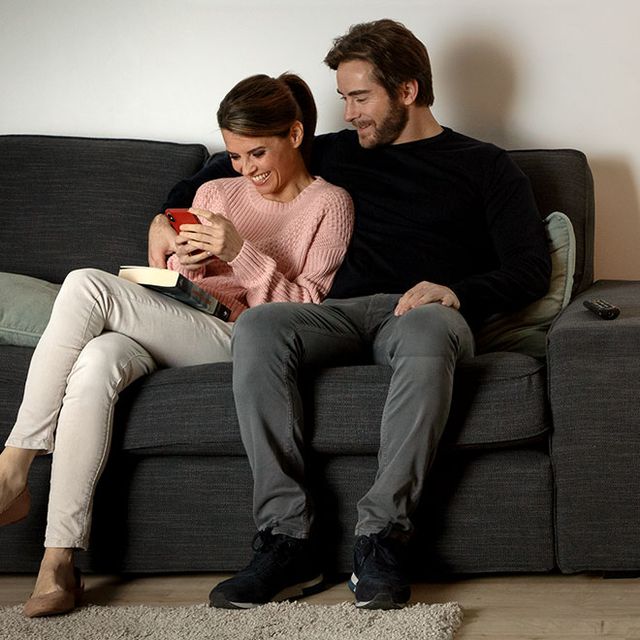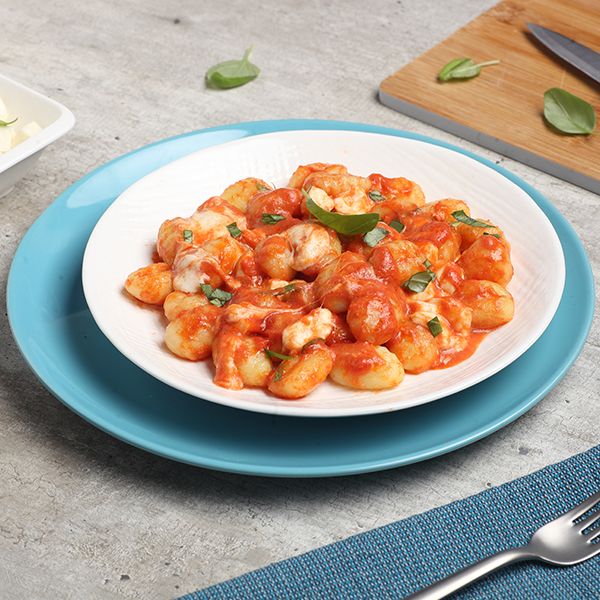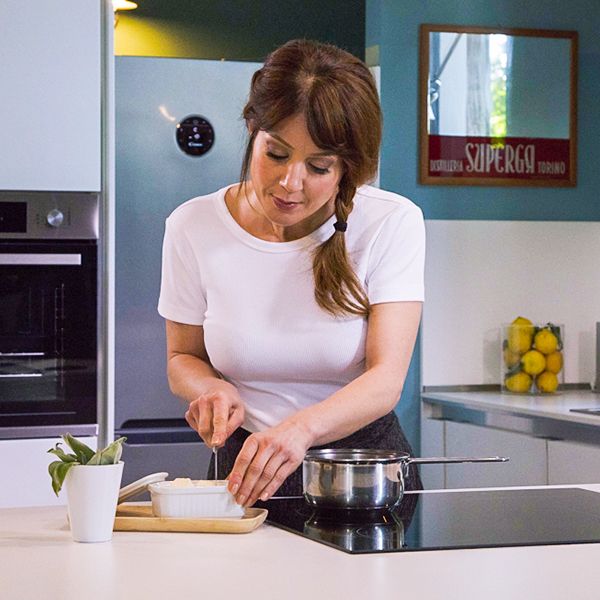The hardness of the water indicates the concentration of calcium, magnesium and other minerals dissolved within it and depends on the source of the house aqueduct. This value is not only important in the choice of the water we drink, but it also becomes so in washing, as water hardness influences the ability of water to react with soap. In fact, the more water is hard, the greater will be the reduction of detergent cleaning power, causing it to be little foamy and leaving mineral deposits (the "limestone") on the surfaces with which it will come into contact.


Tips & tricks to simplify your daily life
The Candy connected appliances are full of surprises and it’s time to discover them all!
Whether it’s about a smart solution to reduce food waste, an unexpected cooking method or the perfect cycle for your favorite silk skirt, a whole world of exclusive content is waiting for you on the Candy App. Discover all the Candy Tips & Tricks and find out how to use your connected appliances at their full potential to make your daily life smart and easy.
Washing tips & tricks
Washing machines


To remove chocolate, apply a mixture of water and soap powder, leave for half an hour and then wash the garment in the washing machine.

Remove excess sauce with water, then immediately pour Marseilles soap or a few drops of liquid dish soap onto it and leave it to act for a few minutes. If the stain has dried out, rub it with a mixture of water, baking soda and salt, then wash in the washing machine.
Tumble dryers

Your tumble dryer offers you drying cycles for every fabric, however, it is possible to dry different fabrics together thanks to a special cycle. When lighter fabrics reach the optimal drying, an acoustic signal will alert you. After removing the items already dry you can continue drying the most resistant items.

Operate the iron at the lowest temperature and use the steam, then turn the garment upside down and stretch it when it is still a little bit wet, place a clean cloth on it before you pass the iron over it.
Dishwasher

To eliminate the unpleasant smell of fish from dishes, rinse them as soon as possible under a jet of cold water after removing any residues of food. Then soak them, always in cold water with dishwashing soap and lemon juice or white vinegar (about 1 cup for a full sink) and leave them for 5-10 minutes, then wash them normally.

Once the thermos has been wet using water at medium temperature, put a few drops of detergent inside it and remove the dirt deposited inside it with a specific brush to wash bottles. Then rinse the thermos, adding the degreaser and then let it act for at least five minutes. After this time, take an abrasive sponge and pass it gently into it.

For cutting boards, ladles, rolling pins and wooden spoons, the normal washing can be carried out using warm water and a few drops of ecological detergent for dishes or liquid Marseille soap. You can use a sponge to rub the parts that need more cleaning, rinse with warm water and wipe with a dry cloth. The wooden boards and spoons should be left drying in an upright position to make sure that the traces of water evaporate completely, so that the wood does not get damaged and mold is not created.
Cooking tips & tricks
Oven

Did you know that you can also defrost food in the oven? Defrost any food in just minutes with the DEFROST function, without altering the food's protein content. The circular heating element and fan distribute the heat as required for defrosting.

The secret to extra crispy chicken? To make sure it doesn't dry out, wrap the meat with slightly dampened oven-proof paper, set the oven to static/ventilated mode, then, 10 minutes before the end of the cooking time, uncover the chicken and set the oven to grill mode to crisp it.

Fill a shallow rectangular container with the juice of a few lemons. Place the container in the oven at 180 to 250 degrees, depending on the intensity of the unpleasant odour, and cook for 30 to 40 minutes. As it evaporates, the lemon juice will eliminate the odours and leave a sweet, fresh fragrance in the oven. If you don't like lemon, you can use any other kind of citrus fruit.

The best way to clean even the dirtiest oven rack is to remove it from the oven and clean it with a sponge and universal grease remover or white vinegar, then leave the rack to soak in water for 10 minutes, rinse and dry thoroughly.
Microwaves

To clean fabrics soiled by candles, scrape off the cold wax as much as possible. Then, heat the soiled fabric in the microwave at P80 for 1 minute and dab the stain with paper or a cloth remnant.

Wash tomatoes and dry. Remove stalk and make an X cut on the top of the tomatoes. Place in the oven, on a plate, for 20 seconds on P50 (500 watt). Once cooled, peel them.

Wash the sponge scourers with cold water and wring them. Fill a plastic bowl with water and lemon juice (or a small glass of vinegar). Immerse the scourer and start the microwave for 5 minutes at P100.
Cooling tips & tricks
Refrigerators

Every food has its own storage temperature. Meat and fish must be placed in the coldest part of the fridge, known as the chiller. The middle part of the fridge (usually at 4-5°c) is suitable for eggs, dairy products, custard and cream confectionery, and foods which have to be stored in the refrigerator once opened. The highest-temperature area, known as the crisper, should be used for vegetables and fruit, which may be damaged by excessively low temperatures. The door shelves are the warmest parts of the refrigerator and are for products which need only light refrigeration (e.g. soft drinks or butter).

Fruit and vegetables may be damaged by excessively low temperatures and must be used quickly, before they deteriorate. It is best not to wash fruit and vegetables before putting them in the fridge, to avoid causing damp which would aid the growth of mould and bacteria.

In the supermarket, you will often find avocados which are still not really ripe and are difficult to peel and eat. If you put them in the refrigerator you will have to wait a long time before you can eat them. It is best to keep them out of the fridge to ripen them fast and enjoy them at the right, soft, consistency.

To use foods before their expiry date and reduce waste, adopt the FiFo (First in, First out) principle. Make sure the foods which went into the fridge first are also the first to be taken out and used. Put the foods bought later behind or underneath the ones already in the refrigerator.
Wine Cellars

Just like coffee, wine too has its own "aroma". The most common are floral aromas, especially typical of white wines such as Moscato, Traminer, Malvasia and Riesling. These, however, are very unstable and can only be preserved for a few months at low temperatures of between of 4 and 8°C.

Corks stay moist if they are kept in constant contact with the wine. Dry corks lose their elasticity and therefore spoil the wine by letting air in.

What material are the shelves of my Candy wine cooler made of? They are made of bamboo, a popular material in the building and furnishing industries, which enjoys certain advantages: it is shock resistant and durable; it is practical and easy to clean (as it does not absorb stains or liquids); moreover, it is environmentally sustainable: as it is not subject to intensive exploitation, it is widely available and beneficial to the forest ecosystem. Your Candy wine cooler, therefore, is safe, practical and eco-friendly!


